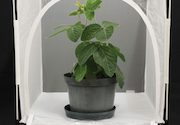| |
| |
 |
 |
| |
 |
|
July 2, 2019 |
|
| |
Highlights from OMAFRA’s latest crop report include: black cutworm pressure in some corn fields, growers replanting soybeans where seed was planted too deep or stands were too thin, and cereal leaf beetle being reported in several winter wheat fields.
» Read more...
Canadian farmers expect to plant more barley, corn for grain, dry peas, lentils and oats in 2019, but fewer acres of wheat, canola and soybeans, according to Statistics Canada’s June Field Crop Survey.
» Read more...
The Government of Canada will invest more than $5.1 million to Agriculture in the Classroom to inspire more interest in agriculture careers.
» Read more...
|
| |
 |
 |
| |
|
| |

With the spotlight on agriculture in the news, Top Crop Manager wants to share a different perspective: yours. For the duration of the season, we want to see your field views. What does being a part of Canadian agriculture look like to you?
The winner will be featured on the cover of our national December issue. Photos will be accepted until October 15, 2019.
» Learn more |
| |
|
| |
 Several types of plant compounds are known to discourage insects from feeding on plants. An Ontario project investigated current soybean cultivars to see if they were equipped with these plant compounds that help with pest resistance, specifically focusing on resistance to the aphid and two-spotted spider mite.
» Learn more
Several types of plant compounds are known to discourage insects from feeding on plants. An Ontario project investigated current soybean cultivars to see if they were equipped with these plant compounds that help with pest resistance, specifically focusing on resistance to the aphid and two-spotted spider mite.
» Learn more |
| |
 Soil, water and topography (SWAT) maps offer growers the bigger picture on what’s going on in the field. During the 2019 Soil Summit, Cory Willness walked through the different layers of a SWAT map and explained how the information is used for variable fertilizer and seeding rates.
» Learn more
Soil, water and topography (SWAT) maps offer growers the bigger picture on what’s going on in the field. During the 2019 Soil Summit, Cory Willness walked through the different layers of a SWAT map and explained how the information is used for variable fertilizer and seeding rates.
» Learn more |
| |
|
| |
|
|
| |
| |







